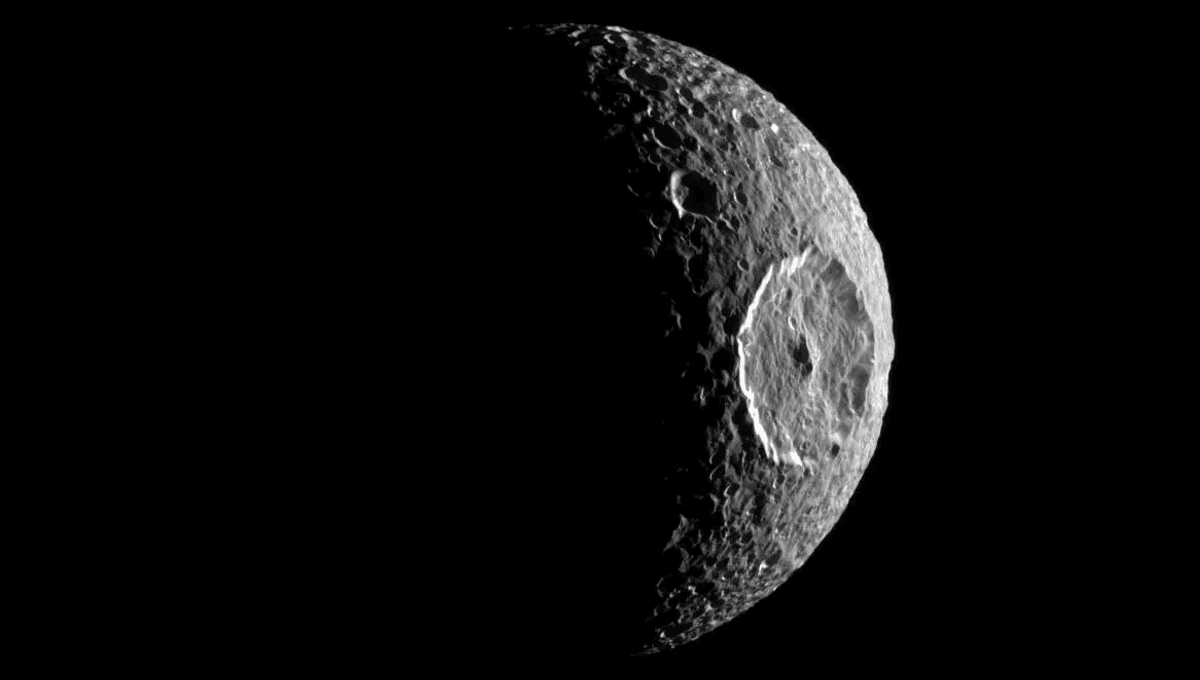
Oceans inside moons seem to be quite common among the satellites of the giant planets of the Solar System, and researchers believe they can add one more to the list: Mimas. The small Saturnian moon is popular for its cratered surface, one of which makes it look remarkably like Star Wars’ Death Star. But it seems that the surface hides a lot beneath it.
The work builds on previous research that showed that Mimas has irregularities in its orbit. One suggestion was that it possessed an egg-shaped rocky core, causing the drift. Another possibility was an ocean buried deep within the moon, not affecting the surface much.
New models suggest the latter scenario is the one that makes by far the most sense. The elongated core would have to be more like a pancake than an egg. The models suggest a liquid ocean may be found between 20 to 30 kilometers (12 to 19 miles) beneath the surface.
“Mimas is a small moon, only about 400 kilometers [249 miles] in diameter, and its heavily cratered surface gave no hint of the hidden ocean beneath,” co-author Dr Nick Cooper, from Queen Mary University of London, said in a statement seen by IFLScience. “This discovery adds Mimas to an exclusive club of moons with internal oceans, including Enceladus and Europa, but with a unique difference: its ocean is remarkably young, estimated to be only 5 to 15 million years old.”
The range of potential ages is slightly wider than that, depending on the model one uses. The oldest the ocean can be is 25 million years old. The youngest is just 2 million years old. No matter the exact age, the ocean is incredibly young. No other known ocean moon compares.
“The existence of a recently formed liquid water ocean makes Mimas a prime candidate for study, for researchers investigating the origin of life,” explains Dr Cooper.
The analysis was possible thanks to data from the Cassini mission, an international collaboration between NASA, the European Space Agency, and the Italian Space Agency. It spent 13 years around Saturn, studying the planet, its rings, and its moons. It was purposely destroyed in 2017 to protect these moons from potential contamination from Earth. And almost seven years on, the data keeps leading to major discoveries.
“This has been a great team effort, with colleagues from five different institutions and three different countries coming together under the leadership of Dr Valéry Lainey to unlock another fascinating and unexpected feature of the Saturn system, using data from the Cassini mission,” Dr Cooper stated.
The study is published in the journal Nature.
Source Link: Death Star-Shaped Moon Of Saturn May Be Hiding A Young Ocean Inside